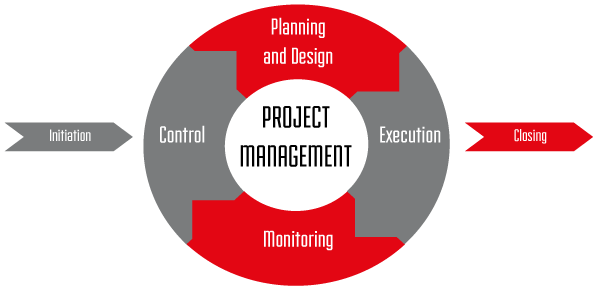PROJECT MANAGEMENT
For us, the key to effective project management is the ability to understand the bigger picture of each project’s specific requirements.
"We always maintain a strong focus on the end result." - Matt Hoefnagels | Operations Manager

Our success in project management is driven by the development of sound client relationships that deliver mutual benefits through the continual and unimpeded exchange of information.
A professional team of experienced tradespeople contribute to each project with a sense of involvement and achievement.
5 key points to successful project management
1. Understanding client needs
The first step is making sure our client’s needs are understood and communicated clearly to the project team. Any changes that are needed can prove costly and time consuming, especially as the project progresses. So, if all requirements and expectations are fully understood before any work commences, the project will get off on the right foot and the chance of problems developing down the line will be reduced.
2. Planning
To ensure all work is completed on time and within budget, it’s important to have a clear plan of action, detailing who’s responsible for what, what work is required, when work needs to be delivered, plus any other useful information the project team may need. It’s much easier for people to get on with their work, when they have a clear idea of what’s expected of them.
3. Clear communication
Clear communication is important for any job, but especially so for installation work. Effective communication results in every team member knowing their role and what’s expected of them – helping reduce tension and stress levels. Additionally, it’s important to communicate effectively with clients, keeping them in the loop with project progress and communicating their correspondence with relevant team members.
4. Managing change
No matter how well a project is managed, how clear the brief was or simple the project, there’s always the possibility of change. The project manager’s role is, at the beginning of the project, to anticipate any problems or potential areas for change and create plans to deal with them. During the project, their role is to use the skills and techniques mentioned in the previous four points to manage the change effectively.

Project Management made simple
There are a number of methodologies employed to manage a project, we believe that if you keep things simple you have less risk of complicating the project.
Thats why we employ a more traditional project management methodology.

1. Initiation
All projects start with an idea for a product, service, or other desirable outcome. The initiation of the project determines the nature and scope of the project. If this stage is not performed well, it is unlikely the project will be successful in meeting the businesses needs. The key project controls needed, are an understanding of the construction environment and making sure all necessary controls are incorporated into the project. Any deficiencies should be reported and a recommendation made to fix them.
2. Planning and Design
After initiation, the project is planned to an appropriate level of detail. The main purpose is to plan time, cost and resources adequately to estimate the work needed and to manage risk effectively during project execution. This is recorded in the project management plan.
3. Execution
Execution consists of the processes used to complete the work defined in the project management plan, to accomplish the project's objectives. The execution process involves co-ordinating people and resources, as well as integrating and performing the activities of the project. The deliverables are produced as outputs from the processes performed as defined in the project management plan.
4. Monitoring & Controlling
The monitoring and controlling process group involves managing and tracking the project, so potential problems can be identified quickly and corrective action taken. To do this the project management plan is used. Monitoring and controlling includes:
- Measuring the ongoing project activities (where are we, against where we should be?)
- Monitoring the project variables (cost, effort, scope) against the project management plan and the project baseline (where should we be?).
- Identifying corrective actions to address risks and issues (how can we get back on track?)
- Managing changes using our change control process (what is the impact of this change?)
5. Closing
Project closing is an important part of project management, sometimes overlooked. A project that is not closed will continue to consume resources.
Closing a project means finishing all activities across all process groups, splitting up the project team, and signing off the project with the customer.
At this point it is important to know how well the project has performed. This is done using the project closure report. It communicates how well the project has performed against its original business case, quality measures, cost, duration and tolerances.
Rather than leave valuable project experiences locked in peoples heads. This is used to pass on valuable learning that can be applied to future projects.

